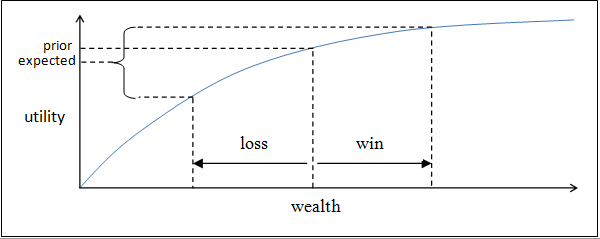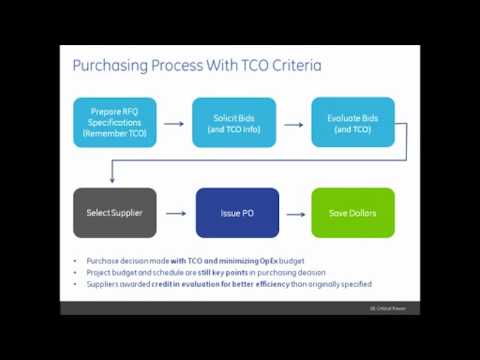Contents
To find the RT, divide the total of credit gross sales by the accounts receivable, which are the gross sales that haven’t yet been paid for. Calculating the common collection interval for a segment of time, similar to a month or a yr, requires first finding the receivable turnover, or RT. Sales / Fixed Assets Fixed assets turnover ratio is also known as sales to fixed assets ratio. This ratio measures the efficiencyand profit earning capacity of the concern. It’s possible that a low receivable turnover rate isn’t the fault of the credit and collections department.

CAs, experts and businesses can get GST ready with ClearTax GST software & certification course. Our GST Software helps CAs, tax experts & business to manage returns & invoices in an easy manner. Our Goods & Services Tax course includes tutorial videos, guides and expert assistance to help you in mastering Goods and Services Tax. ClearTax can also help you in getting your business registered for Goods & Services Tax Law.
Balance of Accounts Receivable
Having a higher average collection period is an indicator of a few possible problems for your company. From a logistic standpoint, it may mean that your business needs better communication with customers regarding their debts and your expectations of payment. The type of business you run will determine your average collection period. Knowing the average collection period can help you comprehend the liquidity of your company, regardless of what is common in your market.

The ratios are interdependent and therefore other parameters should also be considered for the evaluation of debtors and the company’s collection period. However, with the help of this ratio, the small and medium-sized organization can decide and frame the credit policy for its customers. Yet you will need to have a course of in place for coping with late payments. Here are six often ignored steps you possibly can take to scale back your common accounts receivable days outstanding. Companies may examine the common assortment period to the credit terms extended to prospects. For instance, a median collection interval of 25 days is not as concerning if invoices are issued with a web 30 due date.
Is there any difference between the assets turnover ratio and the debtors turnover ratio?
The number of days consists in taking into account the duration of the period considered, generally the duration of a financial year, i.e., one year. Assesses the company’s ability to collect the money from its customers frequently and regularly. Measures the speed and efficiency of collecting money for the sales made in credit. Save taxes with ClearTax by investing in tax saving mutual funds online. Our experts suggest the best funds and you can get high returns by investing directly or through SIP.
Business entities will calculate the average collection period in order to ensure that they are left with sufficient money in hand to fulfil all their fiscal commitments. Customers can default on their payments, forcing the business to just accept a loss. In order to account for this threat, businesses base their monetary reporting on the belief that not all of their accounts receivable will be paid by prospects. A firm may improve its turnover ratio by making adjustments to its collection course of. You can determine net credit sales from the Income statement or Profit and Loss Account. From the Profit & Loss A/c, you can find the company’s total sales made in a given period.
What is a good debtor to creditor ratio?
From a pure risk perspective, debt ratios of 0.4 or lower are considered better, while a debt ratio of 0.6 or higher makes it more difficult to borrow money. While a low debt ratio suggests greater creditworthiness, there is also risk associated with a company carrying too little debt.
The assortment period for a particular invoice just isn’t a calculation, however somewhat is simply the amount of time between the sale and the cost of the bill. The Fair Debt Collection Practices Act is a consumer protection law regulating debt collection procedures. Construct automatic messages that you may send your clients to make it simpler to deliver these kinds of reminders. Starting with a payment reminder template might help you in writing a polished and welcoming payment reminder email if you are not automating reminders.
Expert Assisted Services
It is also helpful in determining the credit policy of the organisation. The management can decide to provide a short period of credit to its customers to improve the organisation’s liquidity. A lower average collection period is typically more favourable as compared to a higher average collection period. A lower average collection period shows that the business is able to collect payments much faster than others. However, like everything, a lower average collection period also has some drawbacks. Companies calculate the average collection period to make sure they have enough cash on hand to meet their financial obligations.
- Also, firms can track and correlate the collection of receivables to earnings to measure the impression the corporate’s credit practices have on profitability.
- The customers may feel the business has strict credit guidelines and hence, may seek to do business with that company which has a higher average collection period and more flexible payment terms and conditions.
- From a logistic standpoint, it may mean that your business needs better communication with customers regarding their debts and your expectations of payment.
- In English & in Hindi are available as part of our courses for Commerce.
Just upload your form 16, claim your deductions and get your acknowledgment number online. You can efile income tax return on your income from salary, house property, capital gains, business & profession and income from other sources. Further you can also file TDS returns, generate Form-16, use our Tax Calculator software, claim HRA, check refund status and generate rent receipts for Income Tax Filing.
A trade debtor is a person from whom amounts are due for goods sold or services rendered or in respect of contractual obligations. Yes, this ratio is very helpful in preparing a forecast budget as it can help in estimating the debtors, sales and cash flows of the future period. This can harm the firm’s work as the debtors block a large amount of payment. The turnover to be collected is the ratio of accounts receivable, which must then be calculated. Turnover ratios are also referred to as activity ratios or efficiency ratios with which a firm manages its current assets. The following ratios can be calculated to judge the effectiveness of the asset’s use.
Business Environment Question Bank FYBMS 2019
A debtor is a person or an entity that owes money to another, which could be any individual or institution . In most cases, the debtor has to pay interest on debt along with the principal debt. A debtor is commonly known as a borrower, but when a company’s debt is in the form of securities, it is called an issuer. debtor collection period Therefore, relying only on the company ratio can lead to wrong interpretations. Consequently, it is better to compare the company ratio with competitors and industry ratio. Another simple technique consists of examining the style during which the business’s allowance for dangerous money owed has changed over time.

Once we have these two values, we will be able to use the accounts receivable turnover formula. And then we will divide the net credit sales by the average accounts receivable to calculate the accounts receivable turnover ratio, or rate. Now, you need to find out the number of average accounts receivable by dividing the opening and closing balance of receivables. Receivables or debtors mean the amount that the customer owes to pay to the business. These are the current assets for the business and the collection period of the receivables affect the liquidity of the business. You can find the amount of debtors or receivables from the balance sheet and debtor’s ledger accounts.
The average collection period also provides insight into the company’s credit policies. The average collection period can be used by the business owner to gauge how effectively the firm’s credit policy is performing. The company may need to review its credit policy and establish more stringent conditions if the average collection period isn’t giving it the liquidity it needs. The average number of days for which a firm has to waitbefore its debtors are converted into cash. The average collection period is the time a business would take in order to start receiving payments that are due for payment to its clients.
The average collection period is obtained by the ratio of the average balance of accounts to the total net credit sales for the period and obtaining its product along with the total number of days in that period. The average collection period is one of the most critical factors for those business entities who depend extensively on accounts receivable for the cash inflows. As the average fee period increases, cash should increase as nicely, however working https://1investing.in/ capital remains the same. Most companies attempt to lower the common payment period to maintain their larger suppliers pleased and probably benefit from trade discounts. The standard formula for calculating a median collection interval is the number of working days divided by the debtor receivables turnover ratio. The average collection period is the time it takes for a firm to receive payments due from its customers in terms of accounts receivable.
For an annual common collection interval, the number of working days is about to 365. The standard working procedure for many businesses is to maintain a median assortment interval that is still decrease than a number approximately one third higher than its expressed terms for collections. The average collection period, due to this fact, can be 36.5 days—not a foul determine, considering most firms acquire within 30 days. Collecting its receivables in a relatively brief—and affordable—period of time offers the company time to repay its obligations.
The average collection period is indicative of the effectiveness of a company’s accounts receivable management practices. This is most important for companies that rely more on receivables for their cash flow. Of the company is high, it shows that the collections are made quickly, and the amount of receivables or debtors is converted into cash or the payments are received rapidly. It also says that the company follows a short-term credit policy, and there are fewer days between the date of sale and receiving money.
Should debtor collection period be high or low?
Companies prefer a lower average collection period over a higher one as it indicates that a business can efficiently collect its receivables.
Instead, it’s possible that mistakes made elsewhere in the organisation are preventing payment. Customers may refuse to pay the corporation if the goods are damaged or the wrong goods are supplied, for example. As a result, the blame for a poor measurement result can be dispersed among a company’s several departments. Net credit sales are the total credit sales made by the company to its customers as reduced by trade discount and sales return if any.
On the other hand, if an organization’s credit coverage is too conservative, it might drive away potential customers to the competition who will extend them credit score. The sum of all credit sales less all returns for the relevant time period represents the net credit sales. Most of the time, the balance sheet of the business also contains information on this net credit sales figure. Collection, in a company, is an essential step in maintaining healthy accounts and keeping a cash flow capable of supporting the costs related to the company. We thus present to you the principle of the average collection period as well as its method of calculation.
You can also enhance sales team productivity and analyse sales data so that you can experience efficient business growth. With reference to the office of the Attorney General of India, Which of the following statements is/are correct? In the performance of his official duties, the Attorney General has the right of audience in all courts in the territory of India.

Leave a Reply